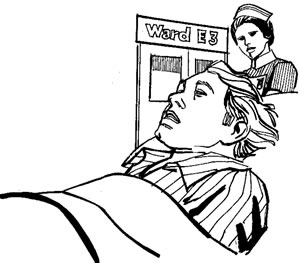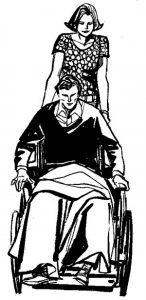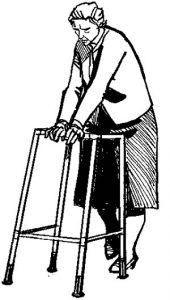Death with Dignity and the Campaign for Euthanasia
This is the text of an address by John Kleinsman in December 2011. He is director of the Nathaniel Centre for Bioethics of the NZ Catholic Bishops Conference. He is also a doctoral student on the morality of beginning of life issues.
The laws of our country and most countries in the world currently forbid euthanasia. There are only five places in the world where either euthanasia or physician-assisted suicide is legal – the so-called Benelux countries (The Netherlands, Belgium and Luxembourg) and two states in America (Oregon and Washington). The last place to legalise physician-assisted suicide was Washington State in 2008.
In the last two years – 2010 and 2011 – at least nine different parliaments around the world have voted down legislation to legalise euthanasia or physician-assisted suicide – that in itself should tell us something about the dangers it presents for society.
But there are still a significant number of people advocating for a law change in New Zealand. My own belief is that many people fail to understand the issues associated with euthanasia and in particular the differences between refusing treatment and euthanasia. I hope I can enlighten you on some of those differences which are morally very important.
Let me first clarify the difference between euthanasia and physician-assisted suicide.
By ‘euthanasia’ I understand the act of intentionally and directly causing the death of a person in order to eliminate their suffering – the act of killing is performed by someone other than the person … usually a doctor. In New Zealand there have been a number of high profile cases in which family members have been charged with euthanizing a family member.
By ‘physician-assisted suicide’ I mean an act where a health professional provides the necessary means but the patient performs the act. The health professional co-operates in physician assisted suicide but is not directly involved in administering the means.
For ease of clarity I will, for this presentation, refer to both these methods as ‘euthanasia’.
Now, Catholic moral teaching on this topic is clear – euthanasia offends against the dignity of human life … the Catechism of the Catholic Church states unequivocally that whatever its motives and means, direct euthanasia, that is the act of causing death in order to eliminate suffering, is morally unacceptable.
However, even if we understand and are inclined to accept this teaching, there is still the challenge of explaining it to those around us and convincing them of our belief. Religious arguments won’t work for people who reject a faith-based approach – in the secular society in which we live we need to find solid rational arguments.
So, what might these arguments look like? Firstly, it is important to be clear about what euthanasia is NOT.
1) The Catholic tradition relies on a clear and very important moral distinction between ‘killing’ and ‘allowing to die’ (including the right of a person to turn down particular treatments, a right which is already enshrined in New Zealand law by way of The Code of Health and Disability Services Consumers’ Rights). Killing is defined as any intentional action (or omission) that brings about the death of another; the direct cause of death is the human intervention or omission.
On the other hand, when a doctor decides for medical reasons not to offer or to cease a certain treatment, or if a patient refuses a particular medical intervention because its benefits would be outweighed by the negative consequences – something we each have a right to do – then it is a matter of accepting the inevitability of death and ‘allowing to die’. In these situations it is the disease or fatal condition overtaking the person that is the cause of death; we effectively allow the patient to return to their dying. This is not euthanasia.
2) In applying the principle that prohibits killing, Catholic teaching also makes a moral distinction between killing and those actions (including the administration of pain relief) that could in theory shorten a person’s life. The intention of the health professional involved is a critical factor in judging such actions. If the health professional concerned directly intends the death of the patient, and in line with this administers drugs at a level that goes beyond what is required for effective pain relief, then the action is wrong. 
If, however, the health professional’s intention is solely the relief of the person’s pain then what they do is morally acceptable even if their action inadvertently, unintentionally and regrettably leads to an earlier death – once again, this is not euthanasia. All people have a right to effective pain relief and there have recently been moves worldwide to promote effective pain relief as a basic human right.
So what is at stake in the debate about euthanasia?
To put it bluntly, the debate is about
eliminating a person’s suffering by the
elimination of the person
To put it bluntly, it’s about the pro’s and con’s of eliminating a person’s suffering by the elimination of the person – contrary to what people say euthanasia cannot and does not eliminate the suffering.
We’ve all heard the questions put forward by those seeking change: ‘Why shouldn’t the terminally ill meet death on their own terms and in their own time rather than prolong their suffering?’ it is asked. ‘Why is it considered cruelty when we allow dying pets to live on but somehow ‘edifying’ or uplifting for humans?’
Now, the argument in favour of euthanasia is not without its own logic. Euthanasia advocates most commonly present the issue as being about freedom of choice. Legalising euthanasia will not adversely affect the choices of those who do not want to die in this way, it is argued. They remain free to act without interference. On the other hand, the on-going prohibition of euthanasia unfairly prevents some (albeit a small minority) from exercising their personal choice; the values of one group are effectively forced onto others. This seems unfair.
So, how do we respond to this?
Our choices are never as free as we might think. In reality our choices are always constrained by the pressures generated by family, social, cultural, societal and economic factors.
Consider the society in which we currently live – it is, sadly, a society in which the experience of those who are sick, dying, disabled and elderly is that they are becoming increasingly more isolated, more invisible and less valued. At the same time families are more fragmented with grown–up children often living and working far apart from parents and less able to provide practical and emotional support. Meanwhile, as the average age of death continues to climb, the number of elderly people will increase which, in turn, means increased costs of caring and more institutional care.
In this context there is the very real danger that the ‘right’ to die will all too quickly become a ‘duty’ to die. Why? People who feel neglected, undervalued and invisible will understandably see themselves as a burden and will want to do the ‘right’ thing, especially when there are growing economic pressures on providing health care and care for the aged.
Furthermore, if euthanasia were legalised there would be an increased temptation for families and society as a whole, to see those who are disabled and sick as a burden to be shed rather than as persons to be cared for. In other words, legalising euthanasia will place at greater risk those whom others might be tempted to think would be better off dead.
Thus, any change in the law will only contribute to increasing pressure within our secular and economically constrained society to ease out the frail, disabled and elderly. In practice, legalising the removal of the infirm has the potential to solve a lot of problems at a family and societal level.
This is not free choice. It’s, at best, a “Hobson’s choice” – the choice you have when you don’t have a choice – the choice you make because you have no other desirable options! This is the darker side of the euthanasia story that no-one wants to talk about.
To summarise: one of the strongest arguments against euthanasia is a pragmatic one. Euthanasia could only ever work in a perfect world where there were no limits on health resources, where families weren’t fragmented, where there were no arguments about inheritances and where the elderly and sick did not feel isolated or marginalised. No euthanasia legislation can effectively guard against the abuse that would, in reality, arise.
Following this line of argument, it is clear to see that our commitment to Catholic teaching on euthanasia need not depend on religious belief.
the Catholic teaching on euthanasia need not depend on religious belief
Equally, when all is said and done, the key question relating to euthanasia cannot be about the protection of personal choice … it’s about protection of people … the most vulnerable people … it’s a matter of social justice and the common good … it’s about the sort of society we want to create … To oppose euthanasia is to take the Gospel preferential option for the poor … which, ironically, is very much a religious stance. Indeed, I think it is the only coherent Christian response.
There are other arguments too for opposing euthanasia, including the effect that legalising euthanasia would have on our perceptions of and trust in the medical profession, and what is sometimes called the ‘slippery slope’ argument – the fact that voluntary euthanasia will inevitably lead to non-voluntary and in-voluntary euthanasia of people of all ages without prejudice or discrimination as has happened in countries such as the Netherlands.
But the key argument remains: We cannot even contemplate creating a legal ‘right to die’ for some when it means many more will lose their right or will to live.
John Kleinsman is the director of The Nathaniel Centre – the New Zealand Catholic Bioethics Centre, Wellington NZ

 Entries(RSS)
Entries(RSS)